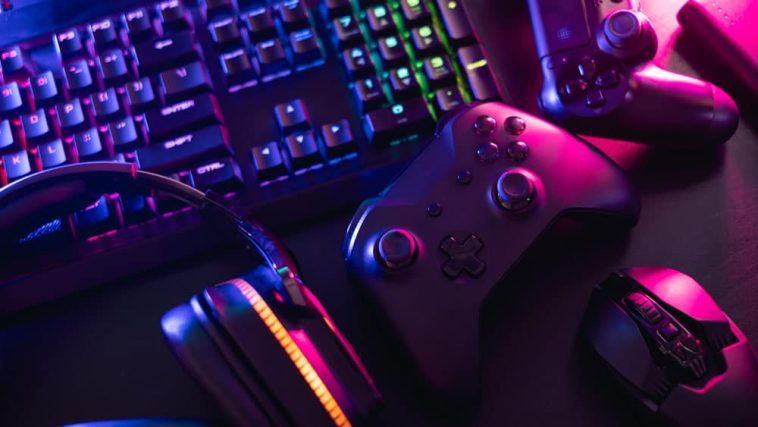And what a lovely screen it is: the 13.3-inch IPS 1920×1080 display is a delight to look at, even if the chunky borders are a bit retro. The edge-to-edge full-sized backlit keyboard is equally impressive, with responsive chiclet-style keys that are suitably clicky. Typing is a breeze.
The whole thing is set off in a grey and black style that’s far more professional than its price tag warrants.
And we’re trying hard to ignore the unfortunate bulge in the plastic hinge above our F2 key. Perhaps we got an early run that slid through the checks.
Battery life
Inside NexDock 2 sits a 51 Wh battery that provides power to the screen and keyboard and Raspberry Pi. We ran our fully charged unit with Raspberry Pi 4 playing YouTube videos from 10:10 to 15:22, just over five hours of solid playback.
A supplied 60 W USB-C adapter is used for charging.
Plugging in
In the box is an HDMI cable with a micro-HDMI to HDMI adapter for Raspberry Pi 4. Meanwhile, a USB-C cable splits out to USB-A and micro-USB (for power and keyboard/mouse connection). That’s a lot of cabling compared to a regular laptop. The nest of cables is an issue.
We managed to bend the connection on the HDMI-to-micro-HDMI adapter, and replaced it with the white extension cable (pictured above). Be sure to disconnect everything when you pack up.
Achilles’ trackpad
The weakest link is the trackpad. There’s no thumb rejection – so as you type, the cursor jumps around the screen. And if you use a thumb to click, the cursor jumps from the clicked point.
Our solution is to attach a USB and disable the trackpad with xinput:
xinput --set-prop "SINO WEALTH USB KEYBOARD Mouse" "Device Enabled" 0To re-enable the trackpad:
xinput --set-prop "SINO WEALTH USB KEYBOARD Mouse" "Device Enabled" 1The lack of hardware and software integration soon becomes apparent. Closing the screen shuts off the power to the display, but not immediately to Raspberry Pi, which carries on running for a short time until the power is yanked. We took to using shutdown -h now when done and removing all the cables.
Digital nomad
Using Raspberry Pi with NexDock 2 as your go‑to laptop is stretching credibility. The finicky trackpad, nest of wires and dongles, and lack of creature comforts will drive you round the bend.
However, NexDock 2 is ideal for users who need to power up a Raspberry Pi at an event. We imagine Pi Jam-goers and folks at Pi Wars will find NexDock 2 a very handy device to have around.
Verdict
8/10
An incredibly useful, yet far from perfect, solution to using Raspberry Pi on the move. Despite its flaws, it is, by far, the best solution we have found to this particularly thorny problem.


